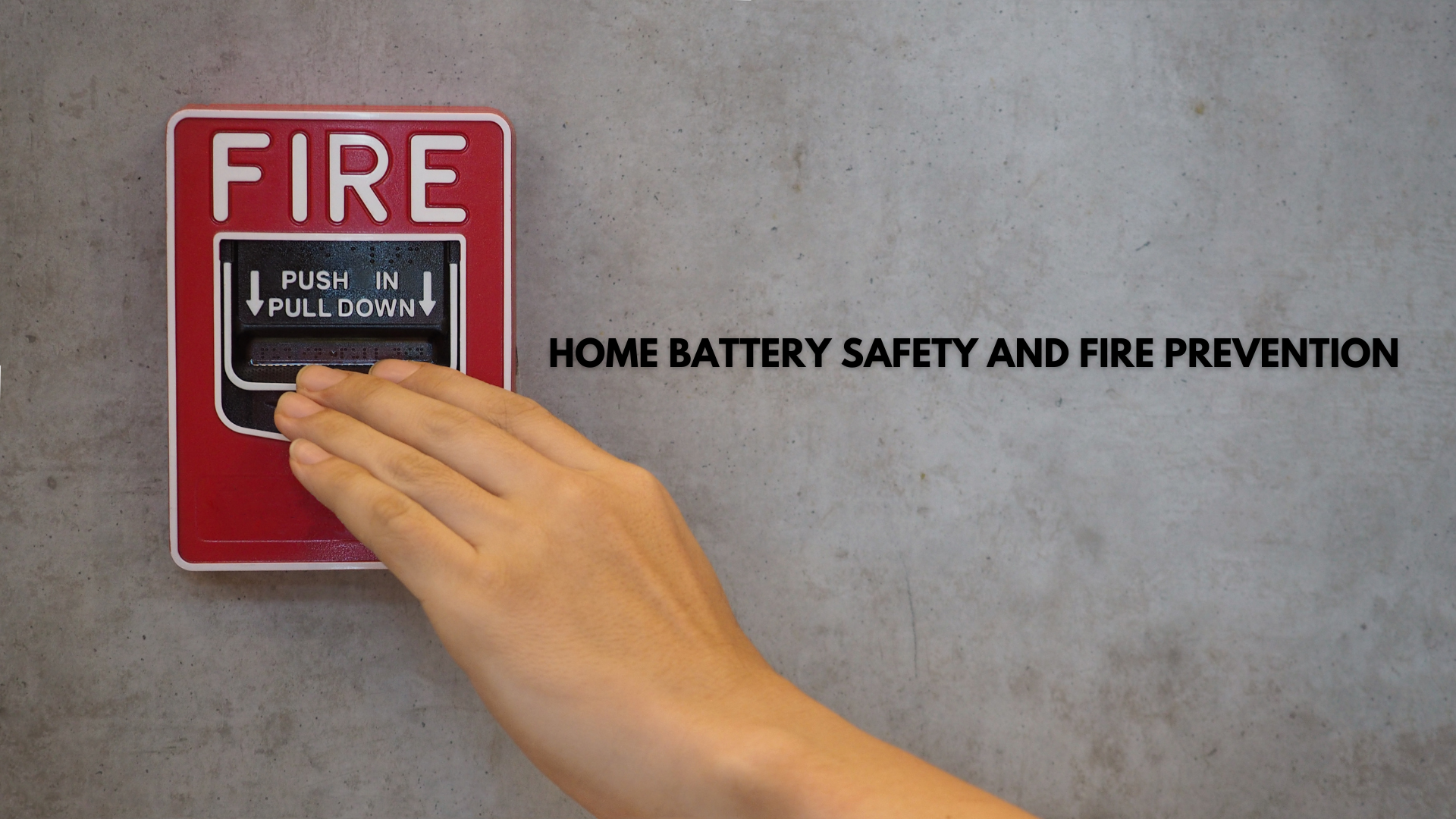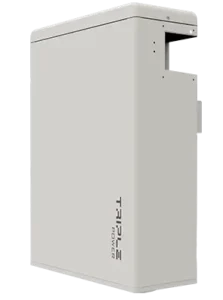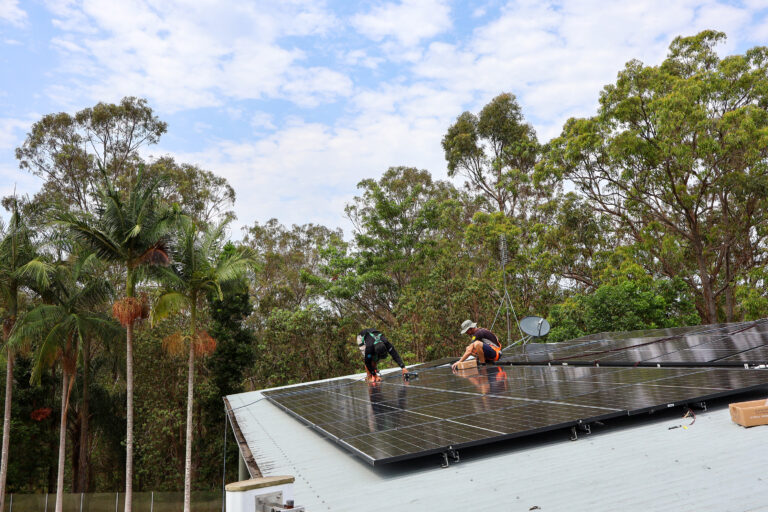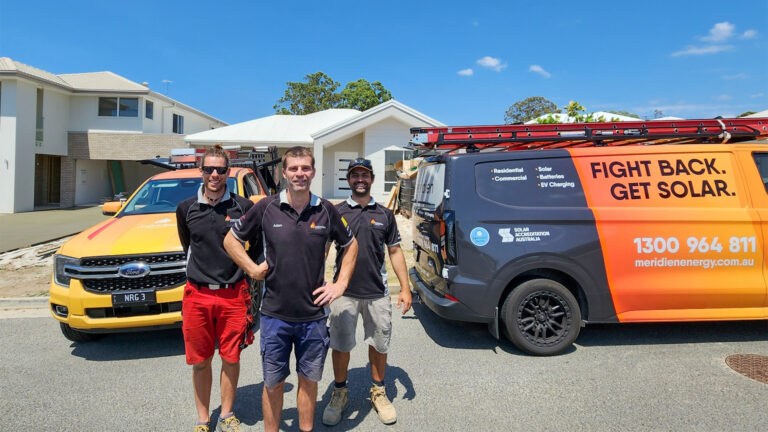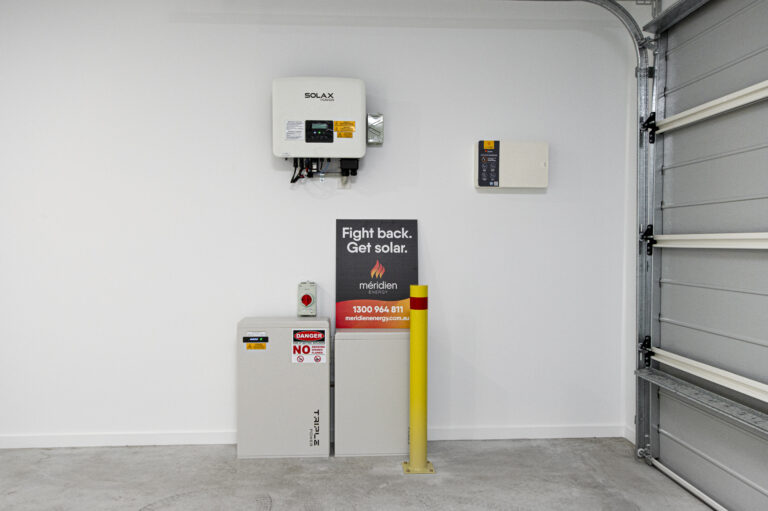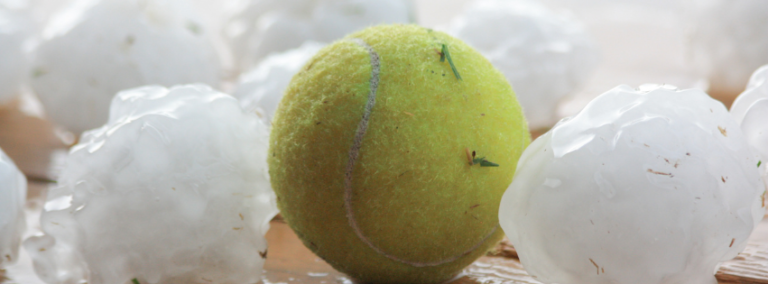As more Australians continue to embrace solar on their homes and businesses, the feed in tariff has continued to decline, leading more and more people to store their electricity in home batteries for the variety of benefits that presents.
With the rise in interest in these battery systems, Meridien has come across many clients with concerns over safety, particularly with alarm bells ringing as soon as lithium batteries are mentioned. So, we thought it was worth publishing a blog on the topic.
Understanding Lithium-Ion Batteries
When people refer to lithium batteries, quite often this will be referring to Lithium-ion (Li-ion) batteries. These things are everywhere—from our smartphones to electric scooters. Their appeal lies in their ability to store a significant amount of energy in a compact form. They have been around for a number of years, and because of this, they are quite cheap.
However, they are not a perfect product. When a Li-ion battery experiences a fault, such as being damage in use or experiencing a manufacturing defect, it can lead to a dangerous situation known as thermal runaway. This is a process where the battery’s temperature rapidly escalates, potentially causing it to bulge, vent toxic gases, and even explode, ultimately causing fires in people’s homes. It’s not all fireworks, gasses and explosions though.
Home Battery Safety in Australia
In Australia, home energy storage systems are very highly regulated, with Australian standards covering everything from manufacturing right through to installation, with the CEC peak body maintaining a whitelist of approved products. As a result of this, when paired with a high-quality installation, home battery storage systems are extremely safe.
A large number of Australian home batteries now use the safer Lithium Iron Phosphate (LFP or LiFePO4, and not to be confused with Lithium-Ion). This LFP Chemistry is considered one of the safest battery chemistries, with a much lower chance of thermal runaway occurring.
Another consideration is the use case of these home batteries vs the likes of a smart phone or electric scooter, they are not often being jostled around, being thrown on tables and jumping up and down curbs. So, the cells that make up the internals of the batteries are not moving around with the connections being damaged.
Now let’s talk some math and statistics.
While there is limited data available, existing statistics indicate that most Lithium battery fires do not involve home batteries. According to Fire and Rescue New South Wales (FRNSW), approximately 1% of the fires attended in 2023 involved a home battery. A broader report from the Australian Competition and Consumer Commission (ACCC) noted only 15 renewable energy storage fires across Australia from 2017–18 to 2022–23.
Based on CER’s figures, the occurrence of home battery fires in New South Wales in 2023 represents a minuscule 0.0144% of the reported installations. This percentage is likely even lower when considering the full scope of home battery installations, and that reporting battery installations to the CER is optional.
While the risks associated with lithium-ion batteries are real, the data suggests that home battery fires are quite rare. The stringent standards and regulations in place, combined with advancements in technology and installation practices, contribute to the overall safety of solar battery systems. As technology evolves and more systems are installed, it’s essential to focus on proper installation and adherence to safety standards to further mitigate risks. With the right precautions, solar battery storage remains a safe and effective option for harnessing renewable energy in Australian homes.
Ensuring the safe installation of your home battery system is crucial. Méridien Energy stand out for their commitment to safety, using our in-house certified electrician for every installation.
If you have any questions about solar and home battery systems, don’t hesitate to contact us today. We’re here to provide expert guidance and ensure your system is installed with the highest standards of safety and efficiency.
Footnotes: “SAFETY STANDARDS FOR LITHIUM BATTERIES In December 2017, Standards Australia published a new standard for the safety of lithium batteries in residential and commercial applications – known as IEC 62619. The standard requires testing under a range of extreme conditions, such as dropping the battery from a height, smashing it, firing a nail into it, overheating it, overcharging it and short circuiting the terminals. Batteries need to demonstrate they can withstand these extreme conditions without causing hazards such as fire, explosion, leakage, venting of flammable gases or rupture of the casing.”
Additionally, the Australian Standard AS5139 governs battery installation, focusing on reducing potential damage and hazards in case of a malfunction.
